The 24th STreet Theatre on 24th Street and Hoover Street is celebrating its 15th anniversary this year. The South LA theatre has been producing Theatre for Young Audiences (TYA), but as executive director Jay McAdams says, “…if we didn’t label the shows as TYA, most adults might not even know the difference. Our mission is to produce theater that parents and children can enjoy together, art that speaks to all audiences, regardless of age.”
Here is the line-up for the new season:
Sept. 15 – Oct. 7:
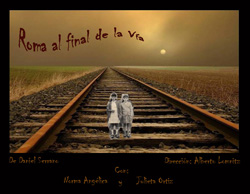 Rome at the End of the Line (Roma al Final de la Via) — 24th STreet Theatre partners with Mexico’s Viaje Redondo Producciones on the U.S. premiere of a whimsical and poignant story about friendship that spans a lifetime. Seven-year-olds Emilia and Evangelina—born a few days apart in a small Mexican town–walk together to the train tracks with the child-like hope of boarding it and traveling to Rome. From that moment, their lives are forever tied together. The two return to the tracks five more times—at ages 13, 20, 40, 60 and 80—to share their dreams, worries and love stories. Performed in Spanish with English Supertitles. (PG 13 – ages 12+)
Rome at the End of the Line (Roma al Final de la Via) — 24th STreet Theatre partners with Mexico’s Viaje Redondo Producciones on the U.S. premiere of a whimsical and poignant story about friendship that spans a lifetime. Seven-year-olds Emilia and Evangelina—born a few days apart in a small Mexican town–walk together to the train tracks with the child-like hope of boarding it and traveling to Rome. From that moment, their lives are forever tied together. The two return to the tracks five more times—at ages 13, 20, 40, 60 and 80—to share their dreams, worries and love stories. Performed in Spanish with English Supertitles. (PG 13 – ages 12+)
Oct. 19-21:
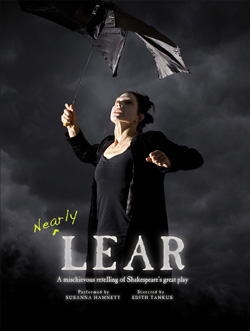 Nearly Lear – 24th STreet Theatre brings Canada’s international touring production to the U.S. for a one weekend only Los Angeles premiere. In this mischievous one-woman tour-de-force adaptation of King Lear, Susanna Hamnett plays the Fool—and every other character—to tell a very personal and poignant story with breathtaking hilarity and heartache. Upending expectations, Nearly Lear blends exuberant storytelling, music and film with Shakespeare’s poetic text to usher the audience firmly into the heart of this great story. Welcome to a Lear that is profoundly accessible and fun, while serving the spirit, language and emotional core of the play. (Rated PG – 7+)
Nearly Lear – 24th STreet Theatre brings Canada’s international touring production to the U.S. for a one weekend only Los Angeles premiere. In this mischievous one-woman tour-de-force adaptation of King Lear, Susanna Hamnett plays the Fool—and every other character—to tell a very personal and poignant story with breathtaking hilarity and heartache. Upending expectations, Nearly Lear blends exuberant storytelling, music and film with Shakespeare’s poetic text to usher the audience firmly into the heart of this great story. Welcome to a Lear that is profoundly accessible and fun, while serving the spirit, language and emotional core of the play. (Rated PG – 7+)
Jan. 26-March 31:
 Walking the Tightrope – 24th STreet Theatre introduces its new in-house TYA company LAB24 with the West Coast premiereof British playwright Mike Kenny’s gentle, funny play. Five-year-old Esme arrives to stay with her grandparents at the end of summer, just like she does every year. But this time, something’s different: Nanna isn’t here, and Granddad doesn’t know how to tell her that Nanna isn’t coming back. This magical play, full of moments of remembered childhood, explores a child’s first experience with loss and celebrates the special bond shared by grandparents and grandchildren. The play was the first recipient of Art Council England’s Award for Playwriting for Children & Young People (Rated G – ages 4+)
Walking the Tightrope – 24th STreet Theatre introduces its new in-house TYA company LAB24 with the West Coast premiereof British playwright Mike Kenny’s gentle, funny play. Five-year-old Esme arrives to stay with her grandparents at the end of summer, just like she does every year. But this time, something’s different: Nanna isn’t here, and Granddad doesn’t know how to tell her that Nanna isn’t coming back. This magical play, full of moments of remembered childhood, explores a child’s first experience with loss and celebrates the special bond shared by grandparents and grandchildren. The play was the first recipient of Art Council England’s Award for Playwriting for Children & Young People (Rated G – ages 4+)
April 20-28:
 Huraclown – 24th STreet Theatre hosts acclaimed Mexican clown Aziz Gual for a limited six-performance engagement. Not your ordinary, everyday clown, Aziz forges a unique connection with both adults and children, leading the audience on a hilarious, poignant and poetic journey that illuminates life’s profound sorrows and great joys. (Rated G – ages 4+)
Huraclown – 24th STreet Theatre hosts acclaimed Mexican clown Aziz Gual for a limited six-performance engagement. Not your ordinary, everyday clown, Aziz forges a unique connection with both adults and children, leading the audience on a hilarious, poignant and poetic journey that illuminates life’s profound sorrows and great joys. (Rated G – ages 4+)
For more information, call (213) 745-6516 or visit online at www.24thstreet.org









 The Rancho Cienega track was built for the 1984 Olympics; today it is bringing people together from all over Los Angeles.
The Rancho Cienega track was built for the 1984 Olympics; today it is bringing people together from all over Los Angeles.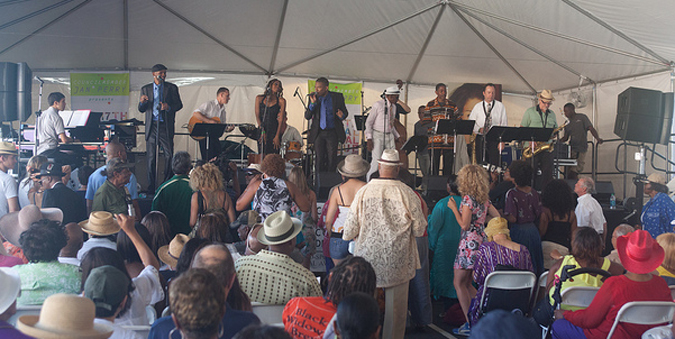
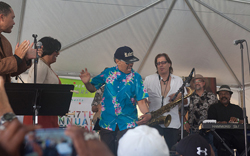 As 9th District Councilwoman Jan Perry, Jimmy Z and members of the SONS OF ETTA band look on, one of the Central Avenue Jazz Festival regular attendees shows off his stuff onstage.
As 9th District Councilwoman Jan Perry, Jimmy Z and members of the SONS OF ETTA band look on, one of the Central Avenue Jazz Festival regular attendees shows off his stuff onstage.
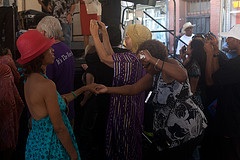
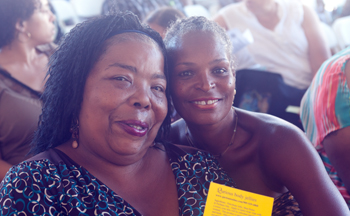
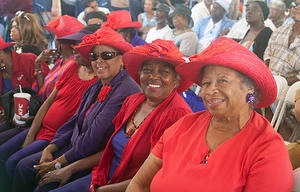
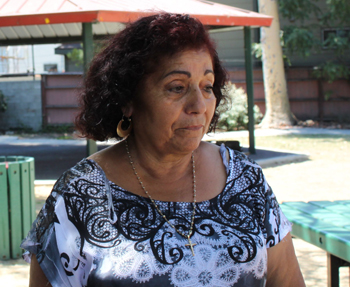 Juana Osorio is worried about getting pushed out of the neighborhood by the USC Master Plan.
Juana Osorio is worried about getting pushed out of the neighborhood by the USC Master Plan.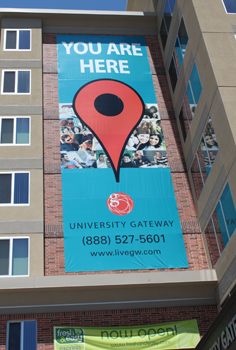 And they often do pay higher rent. Privately-owned student housing can soar to $4,000/month, which is the case at the Gateway Housing development, located on the corner of Jefferson and Figueroa. Rents for a 2-bedroom apartment are $999 per person if the bedrooms are shared with another occupant. If the rooms are rented privately, the monthly rent is $1,798.
And they often do pay higher rent. Privately-owned student housing can soar to $4,000/month, which is the case at the Gateway Housing development, located on the corner of Jefferson and Figueroa. Rents for a 2-bedroom apartment are $999 per person if the bedrooms are shared with another occupant. If the rooms are rented privately, the monthly rent is $1,798. Jon Samore, co-owner of Vermont Outlet True Value, says USC needs to give the neighborhood more information about its plans.
Jon Samore, co-owner of Vermont Outlet True Value, says USC needs to give the neighborhood more information about its plans.
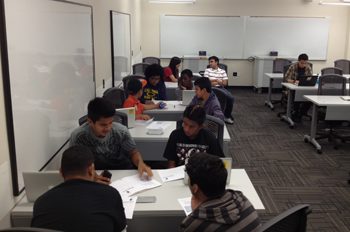 Let’s be honest, South Los Angeles does not have the same reputation that West Los Angeles has. Just like the Middle East isn’t known for its natural resources but for its war and violence. Violence, drugs, and gangs are just a few things that come to mind when thinking of South Los Angeles. But there is a group in South Los Angeles that is daring to be different and rising against the stereotypes. This group goes by the name of
Let’s be honest, South Los Angeles does not have the same reputation that West Los Angeles has. Just like the Middle East isn’t known for its natural resources but for its war and violence. Violence, drugs, and gangs are just a few things that come to mind when thinking of South Los Angeles. But there is a group in South Los Angeles that is daring to be different and rising against the stereotypes. This group goes by the name of 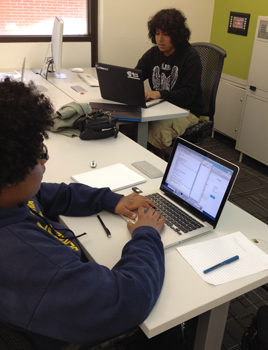 URBAN TxT was created by Oscar Menjivar as an attempt to cultivate young leaders and entrepreneurs in the South Los Angeles area. Menjivar has made URBAN TxT successful by only recruiting “the best of the best,” as he says it himself. He gives these teens a simple task, which is to create a website that helps the community and that can potentially become a business. They then learn about the different aspects of creating a website and decide which roles they want to take on. One can be anything from a developer to a designer.
URBAN TxT was created by Oscar Menjivar as an attempt to cultivate young leaders and entrepreneurs in the South Los Angeles area. Menjivar has made URBAN TxT successful by only recruiting “the best of the best,” as he says it himself. He gives these teens a simple task, which is to create a website that helps the community and that can potentially become a business. They then learn about the different aspects of creating a website and decide which roles they want to take on. One can be anything from a developer to a designer.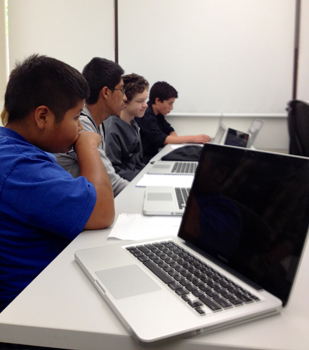 Lately Menjivar has shown this group of young men that hard work truly pays off. He has brought in some truly successful people to visit URBAN TxT. Nancy Vega, creator of PLAY BANK, and Emmanuel Pleitez, Chief Strategy Officer of SPOKEO who is running for Mayor of Los Angeles, compose this list of successful people. Menjivar has worked hard to bring them in and inspire these teens. Both speakers have shared their stories which are very similar to those of the boys in URBAN TxT right now; humbling to say the least. And a few weeks ago the work of the entire URBAN TxT community paid off when they were featured in INC.com as a tech camp aiming to cultivate teen entrepreneurs along with other programs in the nation. The only difference is that URBAN TxT was the only program from the western part of the nation. Accomplishments like this are slowly gaining URBAN TxT more recognition in both the worlds of technology and youth programs.
Lately Menjivar has shown this group of young men that hard work truly pays off. He has brought in some truly successful people to visit URBAN TxT. Nancy Vega, creator of PLAY BANK, and Emmanuel Pleitez, Chief Strategy Officer of SPOKEO who is running for Mayor of Los Angeles, compose this list of successful people. Menjivar has worked hard to bring them in and inspire these teens. Both speakers have shared their stories which are very similar to those of the boys in URBAN TxT right now; humbling to say the least. And a few weeks ago the work of the entire URBAN TxT community paid off when they were featured in INC.com as a tech camp aiming to cultivate teen entrepreneurs along with other programs in the nation. The only difference is that URBAN TxT was the only program from the western part of the nation. Accomplishments like this are slowly gaining URBAN TxT more recognition in both the worlds of technology and youth programs.




